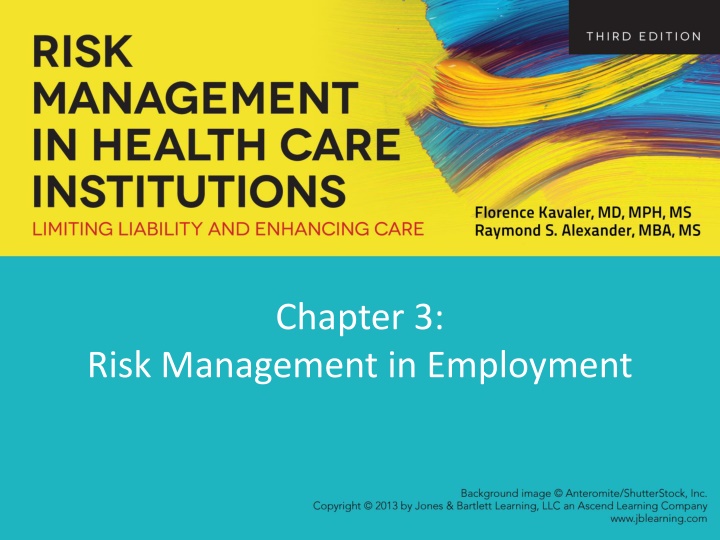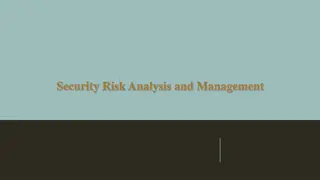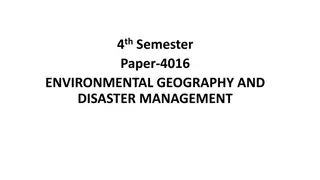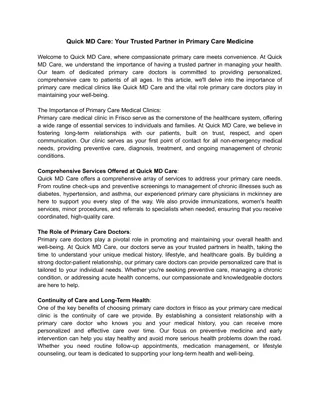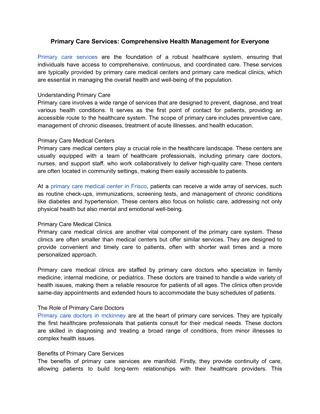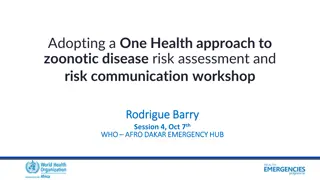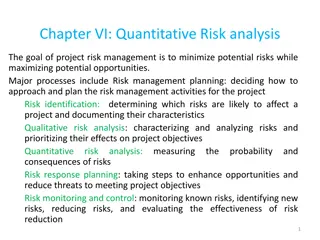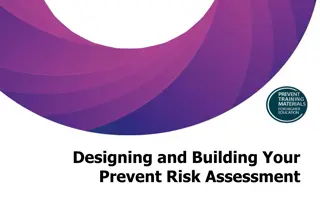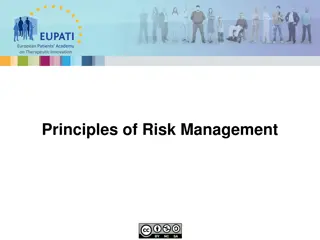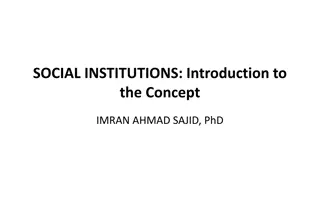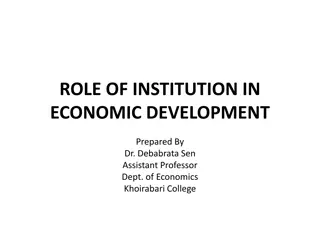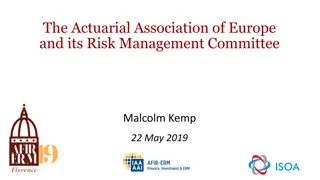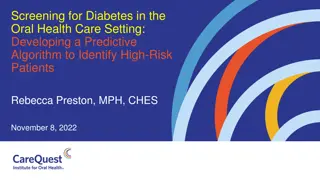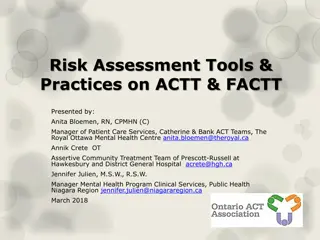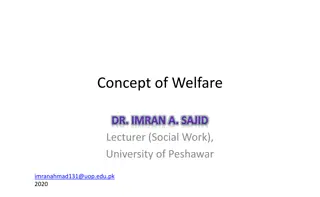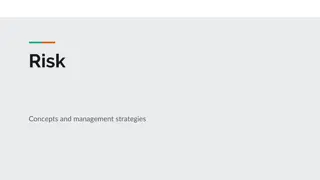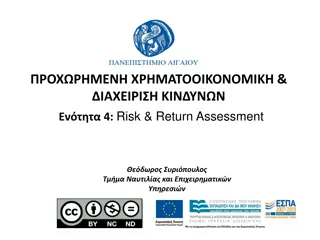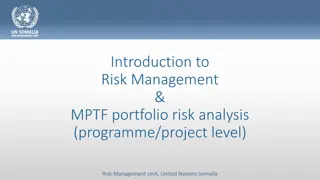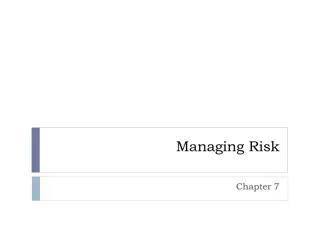RISK MANAGEMENT IN HEALTH CARE INSTITUTIONS
Explore risks in employment relationships, such as at-will employment, implicit contracts, burden of proof in discrimination cases, sexual harassment, and strategies to minimize risks in the workplace.
Download Presentation

Please find below an Image/Link to download the presentation.
The content on the website is provided AS IS for your information and personal use only. It may not be sold, licensed, or shared on other websites without obtaining consent from the author.If you encounter any issues during the download, it is possible that the publisher has removed the file from their server.
You are allowed to download the files provided on this website for personal or commercial use, subject to the condition that they are used lawfully. All files are the property of their respective owners.
The content on the website is provided AS IS for your information and personal use only. It may not be sold, licensed, or shared on other websites without obtaining consent from the author.
E N D
Presentation Transcript
Chapter 3: Risk Management in Employment
Employment Relationship carries Risk Risk to an organization is not limited to provider-patient relationships As in any business, the healthcare organization has responsibilities to its employees. Many of which, if not properly implemented/enforced, can lead to negative and litigious results
Employment-at-Will An employer may dismiss an employee hired for an indefinite period of time for any reason or no reason at all without incurring liability to the employee Caveat: cannot discharge for an unlawful reason, such as racial discrimination
Implicit Employment Contracts Though most states follow the employment-at- will doctrine, many organizations may unknowingly negate their ability to apply this principle through Employer policies (i.e. progressive disciplinary policy) Oral assurances (i.e. looks like you have a bright future ahead of you here) Industry customs (i.e. after so many years in one position, employees are promoted to the next level) Employer conduct (i.e. allowing some employees more chances to correct errors than others)
Burden of Proof In civil litigation of discrimination, the burden of proof is usually on the plaintiff -they must show: Membership in a protected group Satisfactory job performance or appropriate qualifications for the job being sought Receipt of discipline, termination or rejection despite having the qualifications Employees of another protected class were disciplined less severely or the employer continued to accept application of people who were no better qualified
Sexual Harassment Unwelcome sexual advances, request for sexual favors or other verbal or physical conduct of a sexual nature when it is one of the following: is a condition of employment is the basis of employment decisions interferes with work performance creates a hostile work environment
Minimizing Risk of Sexual Harassment Organization must exercise reasonable care to prevent and correct any sexually harassing behavior Written policies/procedures Documented staff training on policies/procedures Consistently adhere to and enforce policies Immediately investigate allegations of sexual harassment
Responsibility of the Employee Employee must report occurrences of sexual harassment to employer Employer must be given the opportunity to investigate and take corrective action Though it is important that an employer investigate all reports of sexual harassment, proactively addressing situations or behavior that may be perceived as sexual harassment is imperative. If management is aware of a potential situation and does nothing, the risk of litigation and penalty is increased
People with HIV or AIDS are protected by the ADA Persons with HIV disease, both symptomatic and asymptomatic, have physical impairments that substantially limit one or more major life activities and are, therefore, protected by the law.
Americans with Disabilities Act 1990 Definition of Disability: A physical or mental impairment that substantially limits one or more major life activities or a record of such impairment or being regarded as having such an impairment. The facility must determine the essential job functions of a position and make reasonable accommodations for a disabled employee.
Due Process When confronting alleged misconduct, there must be Due Process: A clear rule against the misconduct The rule must be reasonable A thorough and objective investigation Notice of the charges and penalty Opportunity to respond or appeal in some way
Workers compensation Mutually beneficial social insurance system where the employer takes care of an injured employee s medical costs and part of the salary in exchange for the waiver of the employee s right to sue.
Retaliation Retaliation may be said to occur when an employee is subjected to adverse employment action (i.e. termination) because of an action he took that was within his rights (i.e. reported sexual harassment) Retaliation is more easily proved by the claimant than other allegations. A claim includes: The employee engaged in protected activity The employer took adverse action against the employee A causal connection exists between the protected activity and the adverse employment action
Whistleblowing Whistleblowing is the action in which an employee reports employer misconduct to legal authorities. It is supported by The Elder Justice Act False Claims Act Whistleblowers do NOT have to report the misconduct internally to management first
Social Media As employees become more adept in using social media, employers must take care in policing so as not to impinge upon freedom of speech Employers need to implement policies that clearly define what is and is not permitted during work hours in terms of us of company computer Define confidential information that is not to be shared Prohibit defamation, harassment and use of questionable websites
Background Checks Background checks are required in many states and help minimize the risk of Negligent hiring. Healthcare organizations must perform due diligence when hiring: Background check for criminal record or other disqualifying actions Validating credentials
Incivility and Violence Poor and/or disruptive behavior (some of which is violent) by physicians and nurses is well documented. Ignoring this problem can increase the risk of patient and employee safety as well as of litigation and penalty
Defamation As part of their due diligence, prospective employers will contact previous employers to requesting a reference. This may cause a dilemma for the previous employer: Should they provide true information about the applicant and perhaps open the organization up to defamation charges? If they do not disclose information regarding the potential for future harm to patients, is the previous employer liable should harm take place?
Recommended Risk Management Strategies for Employers Address issues of microinequity which, alone may appear of little concern, but over time have large implications to employee morale, retention and patient safety Nurture employee engagement Management should be proactive in monitoring provider and employee behavior Be consistent in application of policy
Summary It is crucial to understand employment laws and how they relate to the facility Ignorance may lead to increased risk of employment related lawsuits Patient safety may also be at risk if employment laws are not followed Management staff and employees must know and follow employment policies
